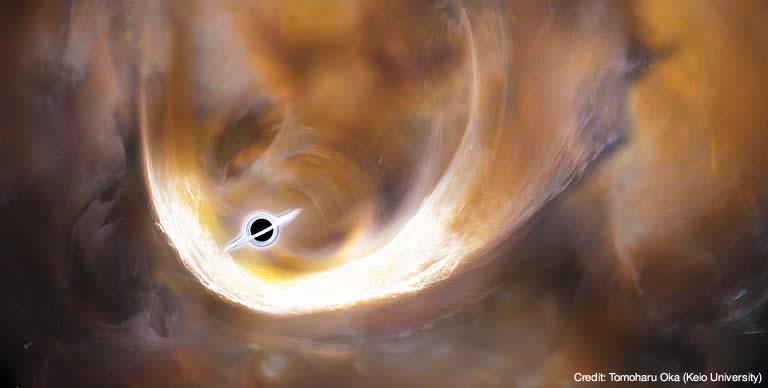Scientists think that they’ve found the second largest black hole in the Milky Way, with a mass 100,000 times that of the sun. The invisible black hole was observed with the Nobeyama Radio Telescope in Japan.
The black hole was found by a team of researchers led by Tomoharu Oka, a professor at Keio University, who first observed a strange gas cloud only 200 light years from the center of the Milky Way, which is around 100,000 light years in diameter.
The cloud had gas that was moving at an extremely wide range of speeds, but there were no compact objects or supernovas that could explain the “wide velocity dispersion,” Oka said in a statement.
To test whether the dispersion was caused by a black hole, the team built a computer simulation of that gas cloud with a gravity source of a mass of 100,000 times that of the Sun, which ended up matching the observed data of the gas cloud.
“Considering the fact that no compact objects are seen in X-ray or infrared observations, as far as we know, the best candidate for the compact massive object is a black hole,” said Oka.
This might be the first discovery of an intermediate black hole, which could lead scientists to better understand how supermassive black holes (SMBH) are formed. SMBHs have masses several millions to billions that of the Sun, but no one knows how SMBHs are formed. One hypothesis is that they’re formed by merging intermediate black holes, which hadn’t been previously observed.
Recent observations have found plenty of clouds with “wide velocity dispersion,” making them candidates for containing black holes. There are an estimated 100 million black holes in the Milky Way, but X-ray observations have only found around a dozen. Radio telescopes could be just the right tool needed to find more of them.
“Investigations of gas motion with radio telescopes may provide a complementary way to search for dark black holes,” Oka said. “The on-going wide area survey observations of the Milky Way with the Nobeyama 45-m Telescope ... [has] the potential to increase the number of black hole candidates dramatically.”





